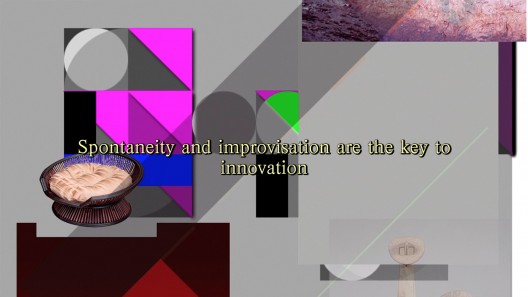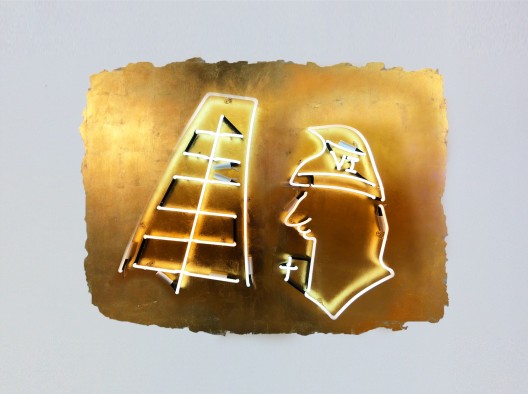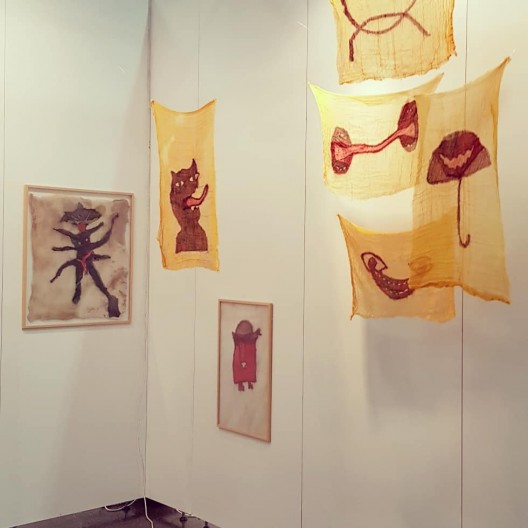by Sara Kramer
The 13th edition of Contemporary Istanbul was held from 20 – 23 September 2018 at the Istanbul Congress Center.
In spite of the fact that Turkey is facing its biggest economic crisis since 2001 and while the Turkish Lira has plunged to roughly one-fifth its value within the last year [1] ’Contemporary Istanbul’ still holds its head high and managed to attract around 80,000 visitors to the fair this year. While champagne bottles were being opened and collectors came from all over the world to purchase new art works, there was no doubt that the show had indeed gone on at ”Contemporary Istanbul’, with final reports counting strong mid-range sales.
Neither, with 83 galleries from 22 different countries, had CI decreased in size this year. Some of the international galleries that returned to CI were Galleria Continua, Galeria Plan B, Marlborough Gallery and Galerie Michael Schultz. The international newcomers included Almine Rech, The Hole and Ethan Cohen. From Turkey Zilberman Gallery and Martch Art Project were at CI for the first time.
While Turkey is facing a tumultuous future, both politically and economically, there seems to be an awareness of the importance of keeping the local scene attractive for the international art world. The ‘Gallery Support Program’ which was launched in 2017 gives financial assistance to a selection of international galleries participating in the fair. It is unfortunate, however, that local Turkish galleries, especially in these difficult times, are not being invited to participate in the Gallery Support Program.
At Upstream Gallery from the Netherlands there were works by four different contemporary Dutch Artists, all working in the forefront of digital art: Harm van den Dorpel, Constant Dullart, Jan Robert Leegte and Rafaël Rozendaal. Harm van den Dorpel’s work “Strategies” was shown on a flat screen monitor and spell bounded a lot of fairgoers with its endless flow of intriguing imagery combined with short and catchy statements, such as “It is about subtracting the obvious and adding the meaningful”. The phrases are seemingly referring to the rapid development of technological hardware and how we are applying and modifying it in our everyday lives.


At Paris based GALERIE DIX9 multidisciplinary Artist Esmeralda Kosmatopoulos from Greece had a solo show. Kosmatopoulos is working with language, identity and otherness, investigating the construction of identities, questioning the influence our post-Internet era has on the dialectic between writing and speaking and aims at encompassing the kinesthetic functions of language. Her show at Galerie Dix9 showed some of her most recent works.


Interview: Günes Terkol
One of the booths that stood out at the fair was the local Istanbul gallery KRANK. Especially the tactile fabric works by emerging Turkish Artist Günes Terkol were visually intriguing and seemed to reference ancient folkloric myths about spirits and ghosts.

On my last day in Istanbul I had the great pleasure of meeting Günes Terkol at the hard-to-find sidewalk café ‘Urban’ located on one of the narrow streets in the city center. Terkol is a charismatic young Artist with short hair who roles cigarettes and contemplates the existential questions in life. She is originally from Ankara, but is based in Istanbul where she has been represented by KRANK gallery for the past three years.
Terkol told me that the fabric pieces on display at Contemporary Istanbul are made out of cotton fabric which was originally used for packing cheese and vegetables. She uses natural dye to color them and cuts them up and sows them together in different shapes and constellations. When I, with some intentional naiveté, asked her why she chooses such modest materials, I began to understand how she positions herself artistically: “the local things that people use on an everyday basis are the ones I am communicating with”. In general, community and inclusiveness are recurring themes in Terkol’s work.
Alongside her solo practice she frequently organizes workshops in Turkey and beyond. In Summer 2017 Terkol hosted a workshop called “Good Days” to which she invited Syrian refugees to make a work on the building facade of the French Consulate in Istanbul. “There are currently approximately 3.5 million refugees in Turkey from the neighbor country Syria” she tells me, and with the first worried expression so far, she adds “but a lot of Turkish people don’t want them to stay in the country, because they see them as a burden to the country’s current economic troubles”. With “Good Days” Terkol wanted to make a statement by giving the Syrian refugees, that are otherwise relatively invisible in Istanbul’s social scene, a strong presence in the city’s political and cultural life and asked them to collectively make a fabric work that covered the facade of the building.
When I asked Terkol what it is like to be an independent female Artist in the current political climate in Turkey, she surprised me by focusing on one of the more positive aspects of Turkish society that is easily overseen. It is the strong presence of women on the contemporary art-scene. While men are still more dominant in most other sectors, there is generally more gender equality on the art scene in Turkey compared to Northern Europe and The United States.

Institute Fraincaise, Istanbul, 2017

Leather-glove, DC-motors, microcontroller-sensors, electronic chipboard, white box 40 x 30 x 12 cm
Courtesy Zilberman Gallery

Oil on burlap, 162.6 x 163.8 cm
Courtesy Marlborough Gallery

Oil pastel on apposite panel, 95 x 170 x 85 cm
Courtesy Zilberman Gallery

branch of sandblasted oak (Quercus ilex), steel modules 288 x 215 x 68 cm
Courtesy Galleria Continua

Oil on canvas, 150 x 120 cm
Courtesy Galerie Michael Schultz

Oil on canvas, 130×180 cm
Courtesy Galerie Michael Schultz
[1] https://www.nytimes.com/2018/07/10/business/turkey-economy-erdogan.html